Politics
“Carbon Dioxide. They call it pollution. We call it life.”
– ExxonMobil Advertisement

1977 Political Interference Cartoon |
This year the biggest political target was Global Warming Theory on this the 10th Anniversary of the Kyoto Protocol with the U.S. the Last Country Not to Sign treaty. While ExxonMobil offered $10k to any scientist who would dispute the IPCC report, it was the Bush Whitehouse that made the most obtuse attacks on science.
From warning Government Employees Traveling around the Artic not to discuss climate change or polar bears, to Interior Officials Overriding Work of Scientists, to the Whitehouse editing the CDC’s Climate Change Testimony (you can read the redacted Testimony here), it was a status quo effort to oppress truths unfavorable to George Bush’s political ideology and corporate supporters. His presidency has so distorted science, that former surgeon general, Richard Carmona (2002-2006), came out to testify that the Bush Administration was, the most partisan, vindictive, and mean-spirited of any administration when it came to distorting science for political gain.
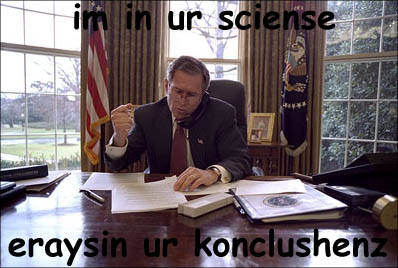
LOL Quack George Bush |
Al Gore was the big name this year, following the success of his film, An Inconvenient Truth, by testifying before Congress and finally exposing Senator Inhofe for the uneducated bafoon that he is. He weathered attacks on his character, his lifestyle, errors in his film, and accusations that it’s all part of a ploy to run for president. He organized the Live Earth Concert, which was of dubious benefit, but Gore and the IPCC winning the Nobel Peace Prize was a fantastic victory. Al Gore is thoroughly enjoying his power as Ambassador to the World, as was seen when he led a shadow U.S. Delegation to the Bali Climate Change talks, usurping George Bush’s authority before the world.
Most promising of all, was the way the political climate changed this year. Newt Gingrich and John Kerry came from opposite sides of the political aisle to hold a debate on Global Warming that accepted it as reality and focused on how best to solve it. The Senate Panel passed a Bill to Limit Greenhouse Gases and the Senate passed a Watered-Down energy bill, the first step in the Federal government acknowledging the crisis. U.S. States signed a Global Warming Pact and California won the right to limit cars’ emissions in court (until Bush’s EPA struck down mileage standards).
There’s nothing solid yet, and we still have a year of the Bush Administration remaining to stifle action, but this year the American Government finally started talking about Global Warming and Alternative Energies, so now science can’t help but win. The truth doesn’t stop being the truth just because politicians reject it.
The Environment
|
Saiga Antelope |
The evidence for Global Warming grew more overwhelming this year as the 2006-2007 Winter became the Warmest on Record and 2007 took 7th place in the list of warmest years since 1850 according to early data, making the top 11 warmest years occurring in the last 13. The Fourth IPCC Climate Change Report dropped the wishy-washy language and argued strongly that Anthropogenic Global Warming was real, spurring many critics to declare case closed on whether it was happening and arguing that it was time to figure out what to do about it.
And the need to do something about it grew ever more urgent this year as more than one independent report called Global Warming a Security Threat, and the Pentagon announced that thawing ice would force it to close three NORAD Early-Warning Radars. The Northwest Trade Passage Opened Up as Arctic ice ebbed to record levels, prompting the Coast Guard to begin planning an Arctic Base to patrol the region.
The Great Lakes Shrank, prohibiting larger cargo vessels from trading in them. The Southeast remains in the worst drought of a century. Retreating glaciers in Greenland kept mapmakers busy, retreating ice revealed a wealth of new species in the Arctic all endangered by Climate Change, and natural resources, sparking a space-race style run on the Arctic between Russia and the U.S.
Ecological Debt Day, the day when the people of Earth have used up all the resources the planet can replenish each year, came a little earlier on the 6th of October, and will probably come earlier still in 2008. A United Nations report made the shocking declaration that there were five years left to save the orang utan. Scientists remained baffled by the sudden and dramatic loss of Honey Bees across the world from the mysterious colony collapse disorder. An entire Salmon Farm was wiped out in a jellyfish attack, as the animals swarm in larger numbers thanks to global warming and the collapse of their predators’ fish stocks.
With all of these immense challenges facing the human race, the world’s scientists are rising to the challenge. The EDGE of Existence Programme highlighted the world’s most evolutionarily distinct and globally endangered species. The U.S. Fish and Wildlife Service requested $27 Million for recovery efforts to find the Ivory-Billed Woodpecker. The Congo created a Massive Reserve to protect our closest relative out of all species, the Bonobo. While video game maker EA and BP Oil collaborated to Add a Global Warming Threat To SimCity.
After the beautiful freshwater river dolphin, the baijis, went extinct last year in China, the Chinese government began taking serious steps toward ecological sustainability, pulling all stops to keep the last female Yangtze turtle on the planet alive for breeding, and establishing the country’s First National Park. However, there’s much more work for China ahead.
While the Southwestern Bald Eagle was taken off the Endangered Species list, leaving 1,926 species to go, scientists argued that the Bush Administration manipulated findings and lowered the requirements in order to claim this victory.
There were two definite positives this year, as scientists fitted a handicapped dolphin with an artificial tail, and the beaver returned to New York City after 200 years.
|
Dolphin Gets Artificial Tail |
Discovery
Astronomers kicked off the year with the discovery of an asteroid that has a one in 45,000 of hitting the Earth on April 13th, 2036. The cabinet of astronomical curiosities grew with the discoveries of a Diamond star (named “Lucy” after the Beatles song), a square nebula, a star 13.2 billion years old, a new Saturnian moon, bringing the planet’s total to 60, a Galactic Death Ray, and Comet Holmes expanded to a size bigger than the Sun. Cassini returned stunning views of Saturn, including a photo of the planet backlit by the sun, revealing additional rings:

Saturn Backlit by the Sun |
China and Japan joined the Cool Kids Club with their moon missions. China sent its first moon probe into space, revealing the country’s first lunar images. Japan’s SELENE probe returned the first high definition images of the moon.
Paleontologists condemned Jurassic Park to look dated and silly with the discovery that Velociraptors had Feathers. An ancient sea scorpion the size of a man took the title of biggest insect ever to roam the Earth. The Cowlike Dinosaur, Nigersaurus, was brought out in fascinating detail for all to see, and a mummified dinosaur, complete with skin, brought all dinosaurs into clearer detail.
In human origins, it was revealed that early humans lacked Achilles Tendons, and it was concluded that the Indonesian Hobbit is a distinct species.
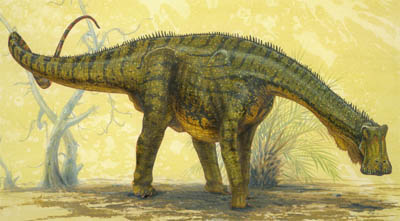
Nigersaurus |
Our present living world continued to prove that it has plenty of mysteries to reveal as New Zealand fisherman landed a colossal squid, the rare Primitive Frilled Shark was caught on film, a spider community was found that covered acres of land, and scientists revived an eight-million year old bacterium from an ice core.
The human tendency to underestimate the intelligence of animals was highlighted again as cameras caught crows making tools and chimpanzees beat college kids at memory games.
In the abstract sciences, Mathematicians mapped E8, an equation the size of Manhattan (video of E8 here). The Earth was found to be 0.1 inches smaller than previously thought, and the standard kilogram lost mass to the bewilderment of physicists.
Science revealed more secrets about human beings intrinsic nature. Eye-tracking technologies revealed that men stare at crotches. A study found that lap dancers at the most fertile point in their menstral cycle got the biggest tips, suggesting that human females are similar to other mammals in that they send out signals that they are in “heat.”
A positive aspect of scientists’ argument that world oil supplies will run out faster than expected, was a study predicting lower obesity rates as gas prices rise. Other paths to self-improvement were found, as low Literacy was connected to shortened lifespans, lending further support to the discovery that education, more than any other element, extends a person’s lifespan. How you percieve and tell the story of your life affects your outlook on the present.
Innovation
|
OLPC |
This year the World Economic Forum dropped the U.S. to Third Place as an engine of technology innovation behind Denmark and Sweden, but Americans continued turning out great ideas, as did the rest of the world.
We all started thinking really hard about energy as oil prices hit record highs. Saint Louis researchers invented batteries that run on sugar. A London-based defense firm’s Solar Plane Set a
54 hour Record flight time. Researchers at MIT successfully demonstrated the transfer of electricity Without Wires, opening the doors to whole new realms of innovation. This renewed interest in energy alternatives was best symbolized by New York shutting down the last DC power station in existence, started by Thomas Edison.
In a year where the release of Windows Vista totally sucked lemons and forced many people to unnecessarily scrap their old computers for upgrades able to run the bloated OS, more people turned to the much more eco-friendly Linux and its Ubuntu flavor for relief. A growing open source culture for a human race that produced 161 exabytes of data the year before, an explosion of information nicknamed the “Digital Big Bang.”
Information technology created new forms of employment, as World of Warcraft and other worlds made gold farming a way to make a living in China. Sex got more wired as a Master’s Student developed a sexual videogame using wired underwear, and biology became less of a nuisance as Menstration Became Optional. The U.N. Warned of impending human clones, and roboticists figured out the trick to getting children to accept their creations.
Amateurs and professionals proved their maker skills as scientists developed Stem Cells from Skin, and amateurs pulled Stem Cells from a Placenta. Google offered $30 million for a robotic Moon rover mission, while Make Magazine sent a Balloon to Space, and unfortunately lost it.
A frustrated Professor built expensive microfluidic devices using Shrinky Dink, and an Astrophysicist replaced expensive time on Supercomputers with Eight PlayStation 3s. Makers short cut microscopes costing hundreds of dollars with 30 minute USB microscopes and Microscopes made from bamboo.
I think the DIY hero of the year was the One Laptop Per Child project. It ended up costing $100 more than the original $100 goal, but the buy one for a needy child, get one for yourself gave the project a good start and opened the educational tool up to the world of hackers, who will improve on it, finding better ways to accomplish the educational project’s goals. That’s the nature of open source.
Entertainment
There was a smattering of science-themed movies this year. Flock of Dodos came out in 2006, but didn’t arrive at my local theaters until 2007. Randy Olson’s film explored personality differences that made creationists more likable than evolutionists. In the Shadow of the Moon took what might be the last walk down memory lane with the only human beings to set foot on another world. Disney’s Meet the Robinsons was an animated film that made scientists the heroes (however zany). Jerome Bixby’s The Man from Earth provided a surprise treat, an engaging science fiction film that takes place entirely at one location and relied heavily on engaging intellectual dialogue.
In books, Natalie Angier’s The Canon: A Whirligig Tour of the Beautiful Basics of Science achieved what I always wanted in a science book, an adventure from the quantum to the microscopic to the macroscopic to the astronomic realms of science. Steven and Lucy Hawking’s Book George’s Secret Key to the Universe achieved what I never realized I’d wanted in a children’s book, hard science fiction. Howtoons: The Possibilities are Endless brought the Do It Yourself movement to children (and adult-children, like myself), and supplemented it with an awesome website.
Michael Pollan’s incredible NYT article “Unhappy Meals” provided the best, most conclusive dietary advice you’ll ever need: “Eat food. Not too much. Mostly plants.” Make it your mantra to healthy living.
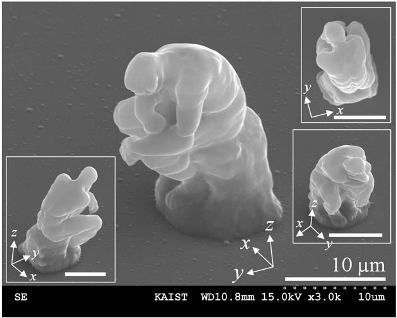 Microscopic Rodin’s Thinker Credit: Dong-Yol Yang et al., Applied Physics Letters |
In the art world, the Brown Hall of Entomology offered 25 cents per cockroach for a display on the “sanitary engineers” of the insect world. Korean researchers crafted a microscopic Version of Rodin’s “The Thinker”, about twice the size of a red blood cell. Scientists at Harvard and MIT genetically modified mouse neurons to fire “tracers,” which produced colorful Brainbows.
 Relationships Among Scientific Paradigms Information Aesthetics |
While on the Internet, Information Aesthetics Relationships Among Scientific Paradigms free downloadable wall chart presented a fantastic visualization tool that provokes hours of examination and reflection. The Science Creative Quarterly hit it big with their Order of Science Scouts Badges, an Internet meme I hope to see become a standard. E.O. Wilson’s Encyclopedia of Life went online, but then failed to produce much of anything by way of content, while Google Space took the prize for the coolest new software toy of the year free or otherwise.
Homo sapiens
A Navy presentation on recruiting Millenials called MySpace Kids an “Alien Life Force.” Perhaps it was stories like the two-year-old girl who became a member of Mensa, the woman visiting her own heart at an exhibition, the labor unions protesting IBM in Second Life, or the Artificial Intelligence cited for unlicensed practice of law that prompted the characterization.
Megan Meier’s tragic suicide after a MySpace hoax drew the most Internet outrage, prompting some to consider criminalizing misrepresentation online.
It was a great year for humanity in space, as 21 years after the Challenger accident took the life of Christa McAuliffe, teacher Barbara Morgan made it to space at 55 years of age. Stephen Hawking got to experience Zero-Gravity at 65 years of age on a Boeing 727. Star Trek’s Scotty’s ashes touched space, while Sulu got an Asteroid named for him.
 Lisa Nowak NASA File Photo |
My favorite space story of the year was Lisa Nowak’s kidnapping attempt of a rival lover. While the average person couldn’t get past the police report’s mention that she wore diapers to make the cross-country drive without stopping, the real story here was of a spectacular over-achiever having a complete mental breakdown. Nowak’s e-mails, which NASA posted online, revealed the busy life of uber-professionals that was also somewhat ordinary. It was comforting to know that someone like Lisa Nowak, who represents the best of the best of the best, can be driven to dramatic, irrational acts for love.
There’s something timeless about that, symbolized by archeologists discovery of a Couple locked in 5,000 year old embrace.
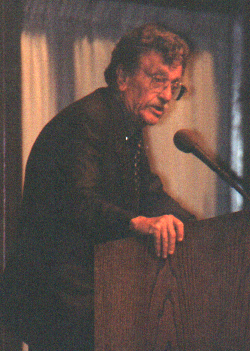 Kurt Vonnegut Photo by Ryan Somma |
This year we said good bye to the Princeton Lab of ESP , to the delight of many scientists who felt the institution was a waste of time on “pseudoscience.” Alex the Grey Parrot, hero of the animal world for his amazing cognitive powers, passed away at 31. Don Herbert, aka “Mr Wizard”
passed away at 89, he was a grumpier version of Bill Nye.
We also lost Kurt Vonnegut at 84, World War II Veteran, Science Fiction author, President of the American Humanist Association, lifetime member of the ACLU, and all around great humanist.
“So it goes.”
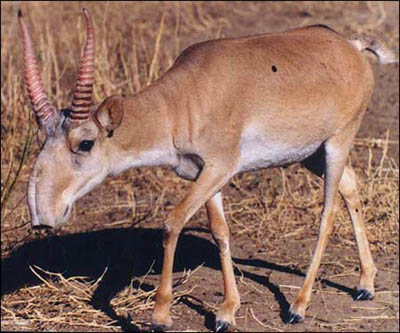


Comments
One response to “Science Yearbook 2007”